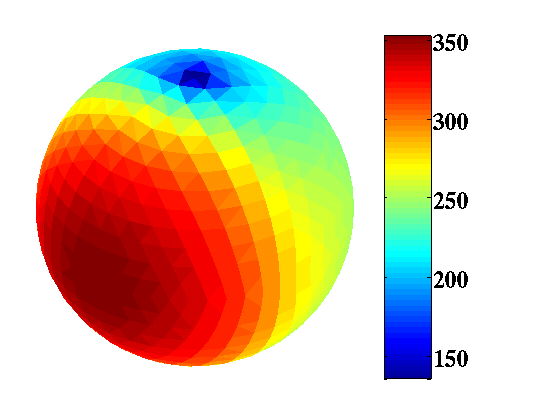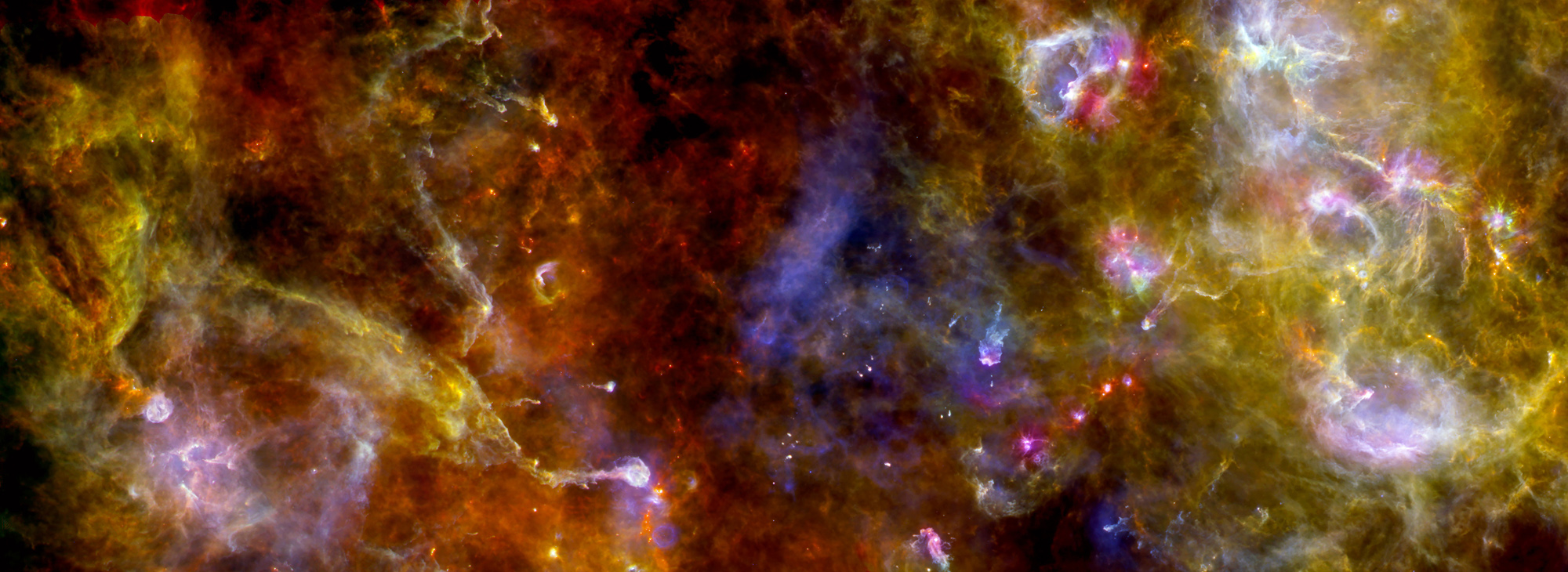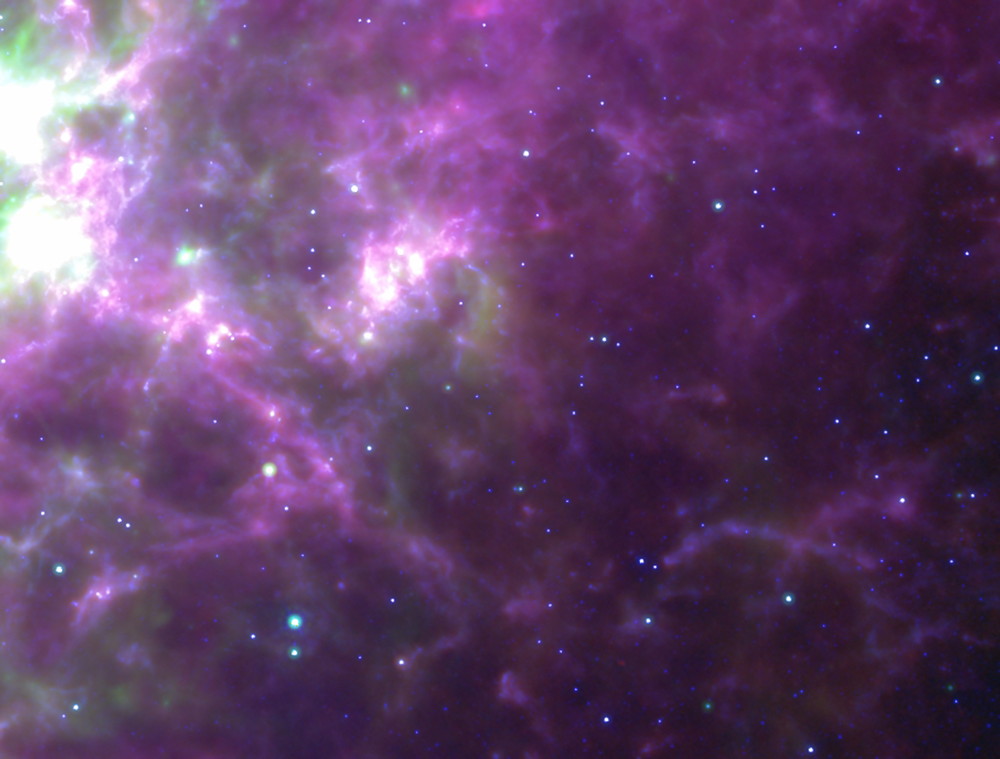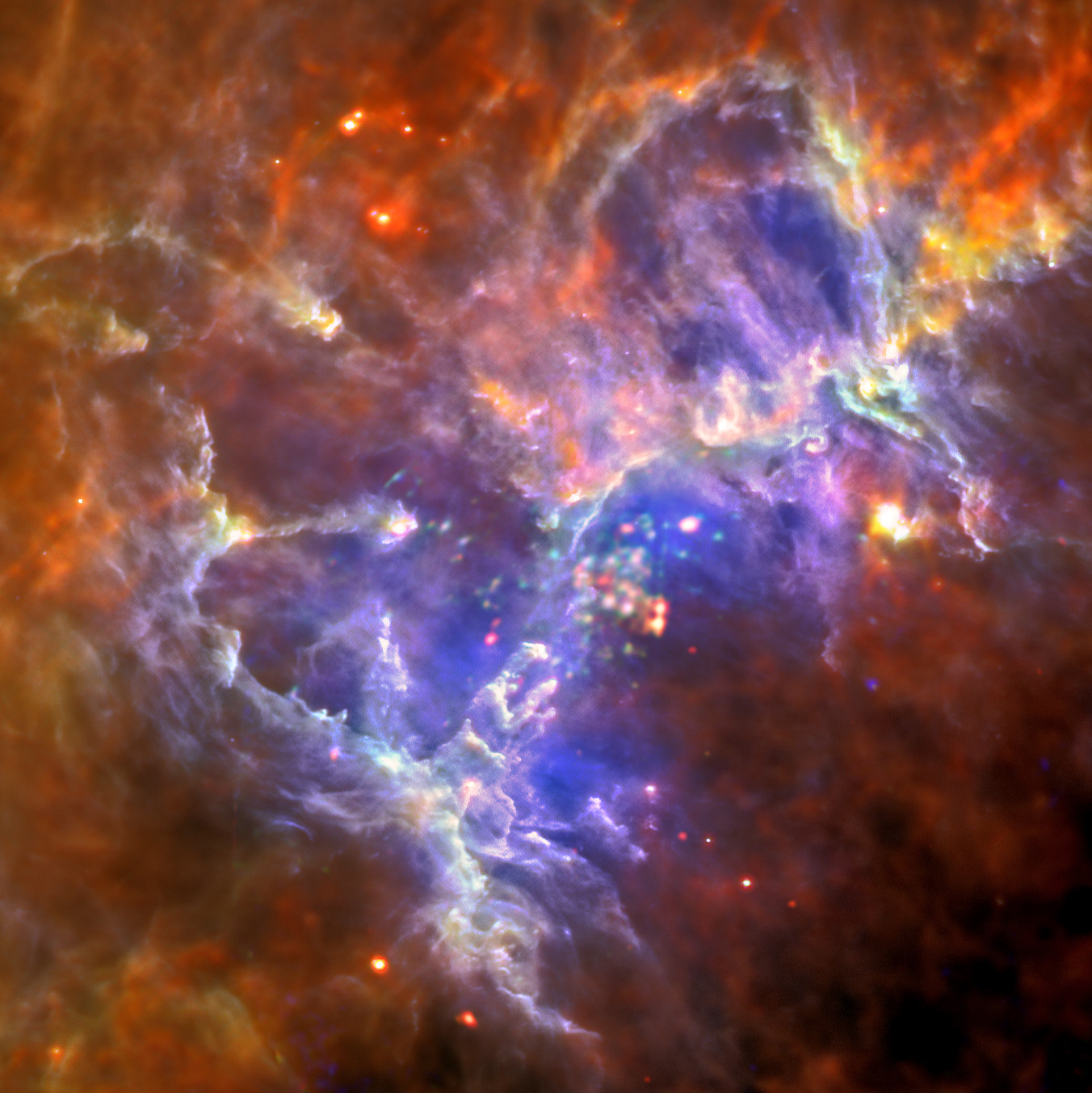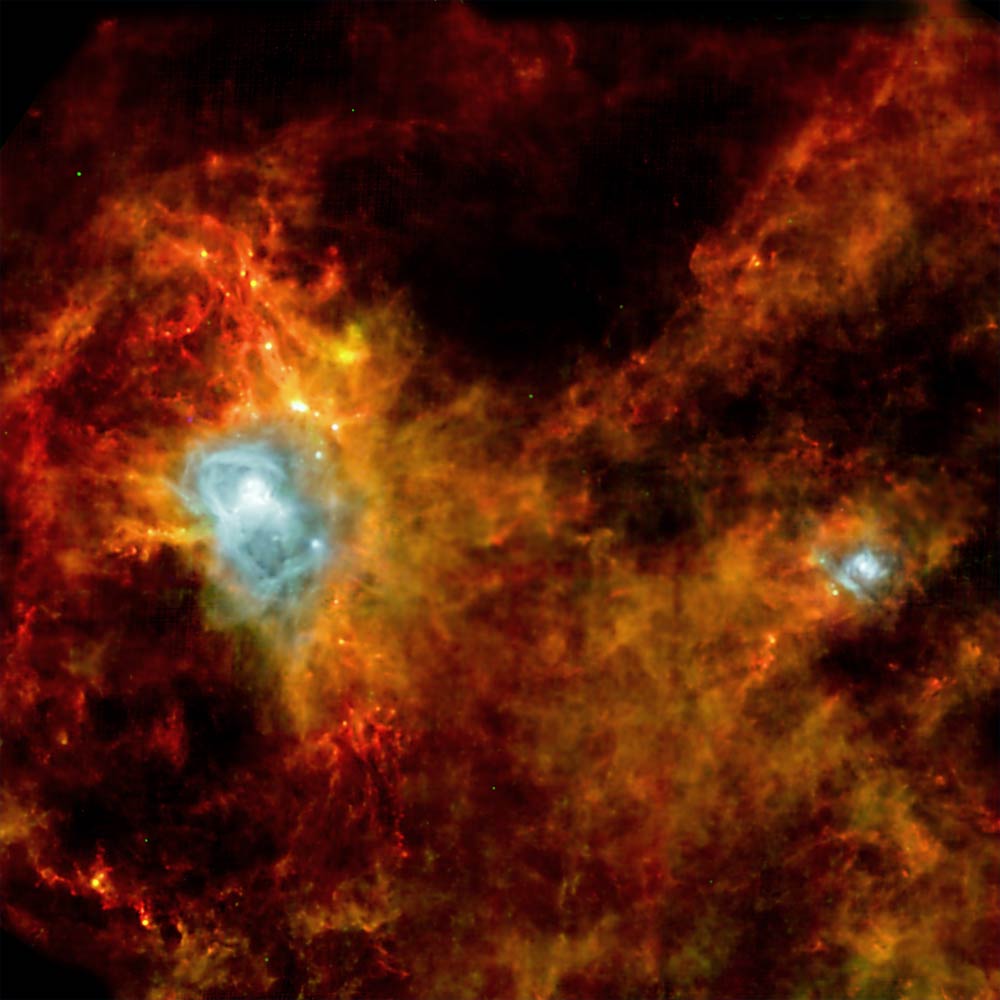Photos: Herschel Space Observatory's Amazing Infrared Images
Apophis Temperature Model
Temperature coded (in Kelvin) spherical shape model used for the thermal analysis of asteroid Apophis, based on data from the new Herschel observations. Note that this is a model. Image released Jan. 9, 2013.
Image of Cygnus-X Star-Forming Region
This new view of the Cygnus-X star-formation region by Europe's Herschel space observatory highlights chaotic networks of dust and gas that point to sites of massive star formation.
Herschel Sees New Protostars
Astronomers have found some of the youngest stars ever seen using the Herschel space observatory. The new results come from the Herschel Orion Protostar Survey (HOPS), led by the University of Toledo. HOPS looked at the stellar nursery in the Orion Molecular Cloud Complex in the constellation of Orion. A portion of the survey is shown here in two images of the same region around the nebula Messier 78 where 15 new protostars were found. Herschel detected the extremely young protostars — indicated in the image by the four circles — that were too cold to be picked up in previous scans of the area by NASA's Spitzer Space Telescope.
Supernova 1987A
This image of Supernova 1987A, taken in the infrared by Herschel and Spitzer, shows some of the warm dust surrounding it.
ESA Herschel Space Telescope Against the Rosette Molecular Cloud
This artist's impression depicts the ESA Herschel space telescope against the Rosette molecular cloud.
Annotated Image of Cygnus-X Star-Forming Region
An annotated picture of the region Cygnus-X, highlighting numerous dense sites of new star formation in the right-hand complex, and the swan-like structure in the left-hand portion of the scene. The image was taken by the European Space Agency's Herschel space telescope.
Multi-wavelength View of Messier 16
Messier 16 is a diffuse emission nebula that contains the young open cluster NGC6611. The iconic 'Pillars of Creation' image taken with the Hubble Space Telescope in 1995 is captured in near-infrared by the VLT, which penetrates straight through the obscuring gas and dust, rendering them almost invisible. The pillars are only a small portion of the extensive nebulous region imaged in far-infrared by ESA's Herschel Space Observatory, which shows cool dust and gas tendrils being carved away by the hot stars seen in the X-ray image from XMM-Newton. The wide-field optical image from the ESO MPG telescope puts the pillars into context against the full scale of the nebula, which is over 75 light-years across.
Breaking space news, the latest updates on rocket launches, skywatching events and more!
New Herschel and XMM-Newton Image of M16
Combining almost opposite ends of the electromagnetic spectrum, this composite of the Herschel in far-infrared and XMM-Newton's X-ray images shows how the hot young stars detected by the X-ray observations are sculpting and interacting with the surrounding ultra-cool gas and dust, which, at only a few degrees above absolute zero, is the critical material for star formation itself. Both wavelengths would be blocked by Earth's atmosphere, so are critical to our understanding of the lifecycle of stars.
Large Magellanic Cloud as Seen by Herschel and Spitzer
This new image shows the Large Magellanic Cloud galaxy in infrared light as seen by the Herschel Space Observatory and NASA’s Spitzer Space Telescope.
Dark Heart of a Nebula Finally Photographed
An inside view of the heart of the Eagle Nebula, captured by the Herschel space telescope on Oct. 24, 2009.

Space.com is the premier source of space exploration, innovation and astronomy news, chronicling (and celebrating) humanity's ongoing expansion across the final frontier. Originally founded in 1999, Space.com is, and always has been, the passion of writers and editors who are space fans and also trained journalists. Our current news team consists of Editor-in-Chief Tariq Malik; Editor Hanneke Weitering, Senior Space Writer Mike Wall; Senior Writer Meghan Bartels; Senior Writer Chelsea Gohd, Senior Writer Tereza Pultarova and Staff Writer Alexander Cox, focusing on e-commerce. Senior Producer Steve Spaleta oversees our space videos, with Diana Whitcroft as our Social Media Editor.
